Volume 30, Issue 1
Displaying 1-6 of 6 articles from this issue
- |<
- <
- 1
- >
- >|
REVIEW
-
Article type: Review
2011 Volume 30 Issue 1 Pages 1-8
Published: January 31, 2011
Released on J-STAGE: February 05, 2011
Download PDF (724K)
ORIGINALS
-
Article type: Originals
2011 Volume 30 Issue 1 Pages 9-14
Published: January 31, 2011
Released on J-STAGE: February 05, 2011
Download PDF (735K) -
Article type: Originals
2011 Volume 30 Issue 1 Pages 15-22
Published: January 31, 2011
Released on J-STAGE: February 05, 2011
Download PDF (486K) -
Article type: Originals
2011 Volume 30 Issue 1 Pages 23-27
Published: January 31, 2011
Released on J-STAGE: February 05, 2011
Download PDF (465K) -
Article type: Originals
2011 Volume 30 Issue 1 Pages 29-35
Published: January 31, 2011
Released on J-STAGE: February 05, 2011
Download PDF (644K)
ANNOUNCEMENTS
-
Article type: Errata
2011 Volume 30 Issue 1 Pages 37
Published: January 31, 2011
Released on J-STAGE: February 18, 2011
Download PDF (21K)
- |<
- <
- 1
- >
- >|
